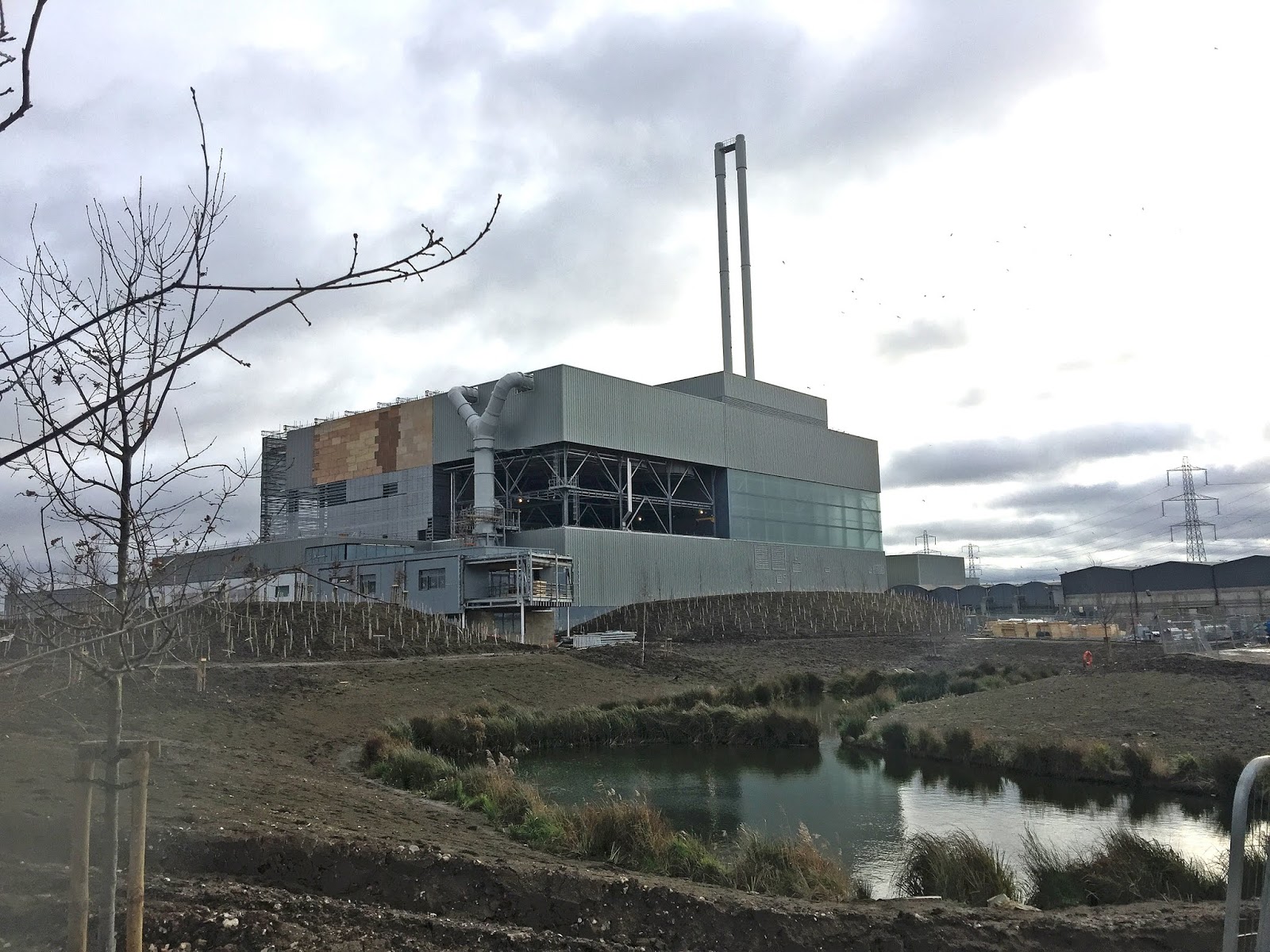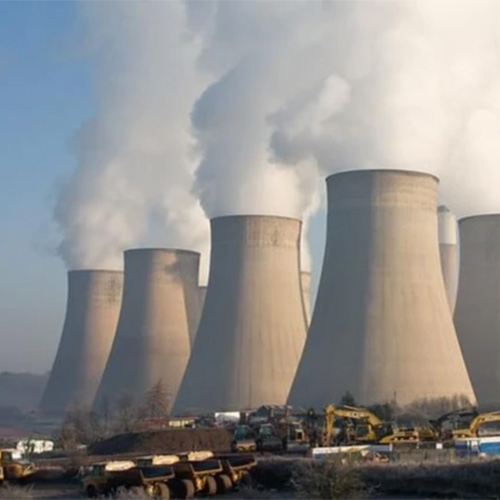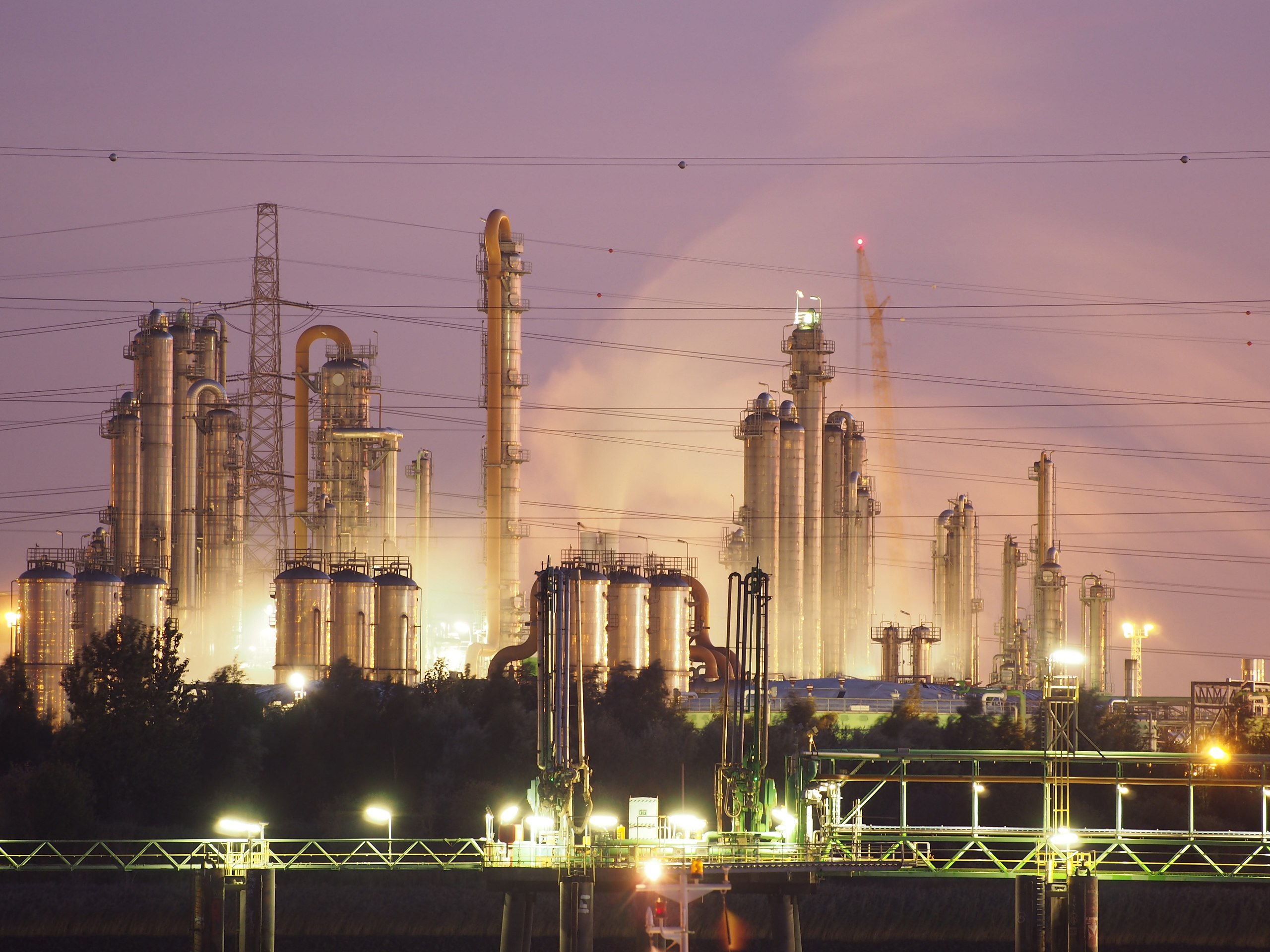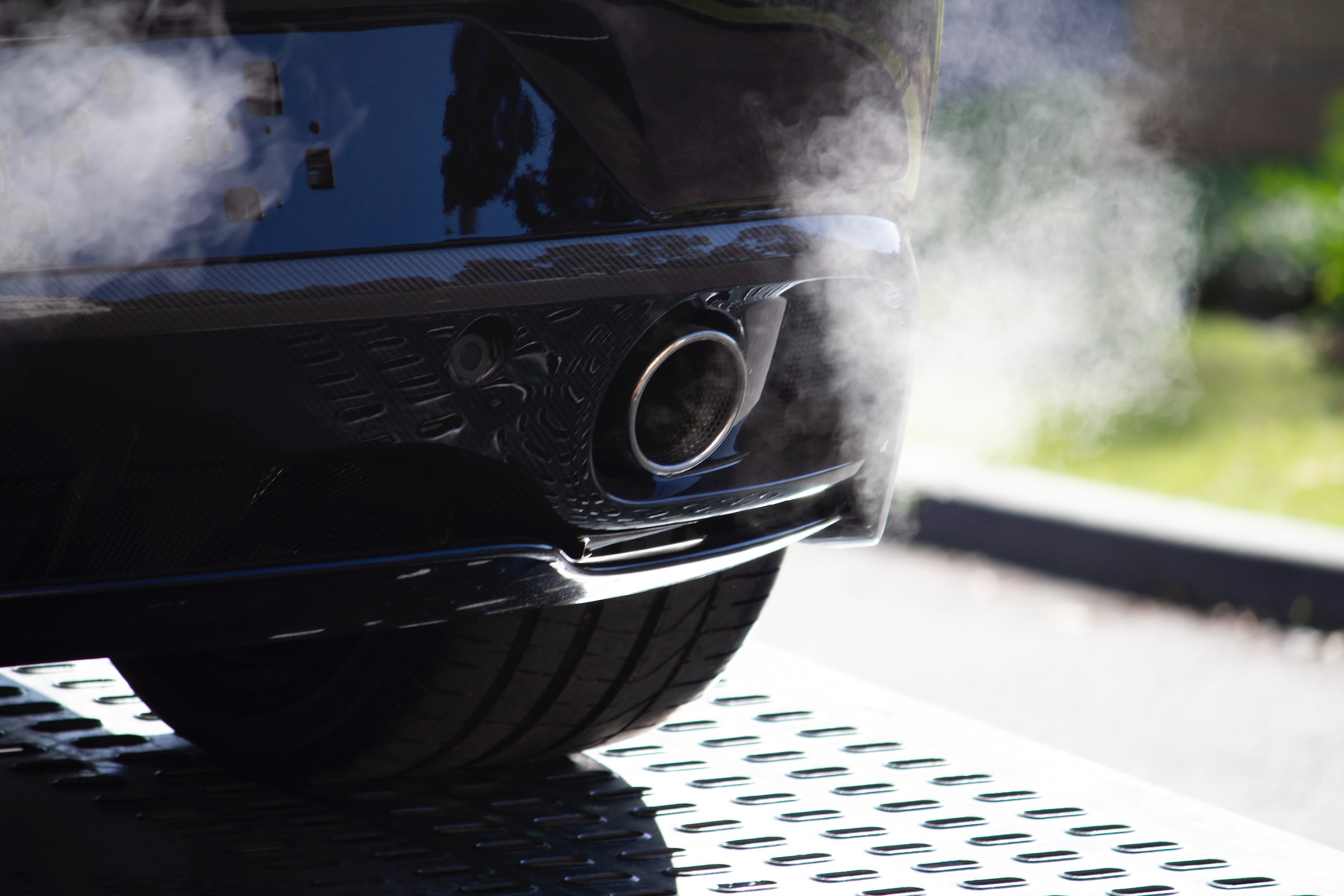Incinerators were supposed to solve the UK’s waste crisis. Are they making it worse?
By Josephine Moulds and SourceMaterial
Incinerator operators are claiming to generate low-carbon electricity despite having reams of data showing this is false, SourceMaterial can reveal.
The findings undermine one of the biggest justifications used by the £7.5 billion industry, which benefits from tax breaks and subsidies worth billions, to build the waste-to-energy plants that have provoked protests in communities across Britain.
With 48 working incinerators in the UK and plans for almost 100 more, there are fears a supposedly green solution to the nation’s refuse problem is funnelling taxpayers’ money into costly white elephants that undermine recycling and poison the air.
The two largest operators in the sector, Viridor and Veolia, explicitly stated in planning applications last year that their proposed plants would generate low-carbon energy.
SourceMaterial’s analysis of the companies’ own data, published in their annual performance reports, shows that in 2019 their incinerators produced almost the same carbon emissions per unit of electricity as a coal-fired power plant.
This is because a significant portion—around 12 per cent—of the black bin bag waste that incinerators burn is plastics made from fossil fuels.
“There is no doubt that an energy-from-waste plant is not low-carbon if it burns plastics,” says Anders Damgaard, a waste management expert at the Technical University of Denmark.
In 2019, Veolia’s plants emitted an average of 970 grams of CO2 equivalent emissions for every kilowatt hour of electricity exported to the grid, while Viridor’s plants averaged 889g. (Viridor argues that this figure should be lower to account for times when plants are broken and burning waste without producing electricity, a methodology experts consulted by SourceMaterial dispute.) The UK’s coal-fired power plants emitted an average of 985g.
“It’s misleading” to call the electricity low-carbon, says Ann Ballinger of Eunomia, a sustainability consultancy whose clients include the government. “You are still burning a lot of plastic to get your energy in an incinerator, so that is pretty similar to burning oil.”

An incinerator chimney in Edmonton in North London (Credit: UKWIN)
Landfill claims
Operators like Veolia and Viridor say their incinerators save carbon because they divert waste from landfills, where it would release harmful greenhouse gases—a claim scientists reject.
“Energy-from-waste is not low-carbon,” says Piers Forster, an atmospheric physicist at University of Leeds who sits on the UK Committee on Climate Change. “In recent years the amount of biogenic waste sent to landfill has declined and many landfill sites are introducing methane capture, so claims of low-carbon energy are looking less and less supportable.”
The method incinerator operators use to count their own emissions is “wrong”, says Pedro Faria at CDP, a consultancy that helps many of the world’s largest companies assess their climate impact:
“From the point of view of the Greenhouse Gas Protocol, the mix of avoided emissions with actual emissions is not allowed. You cannot mix those two things, they are two different ways of looking at reality.”
Using landfill for comparison is misleading because it falsely suggests dumping waste is the only alternative to burning it, according to Michael Lenaghan, a scientist at Zero Waste Scotland, a government-funded non-profit organisation.
“Landfill is not the only alternative to waste-to-energy,” he says. “There is potential for lower carbon options for treating residual waste, but we would always stress that increased recycling, reuse and waste prevention are much better.”
Subsidy bonanza
The UK’s shift towards burning waste instead of burying it was triggered in the late nineties when lavish incentives saw waste companies flock to the sector like seagulls to a landfill.
Incinerators were billed as a greener way of dealing with rubbish. But while landfills are encouraged to limit emissions through heavy taxes on the pollution they cause, waste-to-energy plants are exempt.
And the incinerator industry has successfully lobbied the government to exclude it from the emissions trading scheme that charges polluters for burning fossil fuels, despite burning large amounts of highly polluting plastic.
That exemption, which campaigners are challenging in court, saved operators more than £80 million in 2019 and will see them avoid over £15 billion in payments to the government if they burn waste at the same rate over their 25-year life span, SourceMaterial’s analysis shows.
On top of this, the operators, who argue that half of the power generated is renewable because half of what they burn is organic material, have already received more than £60 million in renewable energy subsidies and are on course to receive a further £600 million of public money during the incinerators’ lifetime.
These inducements have pushed the amount of waste burned in England up by 44 per cent in the five years to 2019. Recycling, meanwhile, has flatlined and is lowest in areas where incineration rates are highest.
Tower Hamlets in London, which has the highest incineration rate in the UK at 81 per cent, also has the country’s worst recycling rate. The 10 local authorities with the lowest recycling rates across the UK have an average incineration rate of almost 70 per cent.
‘Very special circumstances’
Exaggerating the climate benefits of incineration helps mask a darker underside to an industry beset by misleading planning applications, bullying and back-room deals.
Beddington in South London is one of several waste-to-energy projects where questions have been raised about the ties between local officials and corporations.
After Sutton Council named Viridor its preferred bidder for a £1 billion contract, a local website, Inside Croydon, revealed that a councillor on the selection committee was a close friend of Viridor’s chief executive.
John Drage said he hadn’t seen the Viridor boss, Colin Drummond, in years, only for it to emerge that he and his wife attended a formal dinner as Drummond’s guests just days before Drage attended a crucial council meeting at which Viridor was selected to manage the council’s waste. Drage declined to comment for this story.

Beddington incinerator (Credit: Peter Alfrey)
Viridor is building the incinerator on Beddington Farmlands, a protected wildlife habitat. To skirt restrictions, the company said it would restore the nature reserve and invoked “very special circumstances”, promising to improve life for communities by using excess energy from the plant for a district heating network.
Sutton Council said the cheap energy would further its aims of “achieving zero carbon” and “help to address fuel poverty” across South London. But five years on, the network has just a single customer, Barratt Homes’ New Mill Quarter Estate, where residents pay almost 30 per cent more than the market rate.
“I cannot sacrifice my kids’ food or school things because of heating,” says one resident, Jimmy Kamto, who is struggling to meet the payments. “You try to do the right thing and in the end you’ve used all your credit cards and the bills keep coming.”
More than 300 of the residents in New Mill Quarter are now suing the council, saying they will be left liable for £2.9 million in excess bills, a figure the authority disputes.
Residents are also asking if the council allowed Barratt to backtrack on commitments to the community in return for backing the heating network. “Suddenly Barratts gets 80 new properties and the retail space is halved, the bus interchange that was promised to the local area is removed and the heating network is adopted,” says Sheldon Vestey, who chairs the estate residents’ association. “Now I can’t say what happened there, but it all happens around the same time.”
Responding to questions from SourceMaterial, both Sutton Council and Barratt said there was no connection between the heating scheme and the planning changes.
‘It turned into this horrible thing’
Meanwhile, consequences for the 120-hectare Beddington Farmlands have been catastrophic, says Peter Alfrey, a local conservationist.
“There was this vision to create this amazing nature reserve,” he says. “It should have been a Big Society project—this corporation, the council and the local community all working together.”
Instead Viridor ploughed on with construction of the incinerator despite severe delays to the conservation management plan, devastating local bird populations, Alfrey says. Of 10 species targeted for protection in Viridor’s conservation management plan, nine are either extinct or on the verge of extinction locally.
“It turned into this horrible thing,” says Alfrey. “This ecological meltdown and all these extinctions and everybody falling out and hard work being trashed.”
While Viridor has set up a fund to support local projects and has so far disbursed £185,000 in grants, some payments have raised eyebrows among campaigners.
One donation of £20,000 went to resurface the courts at Wallington Tennis Club, where the local Liberal Democrat MP at the time who sat on Viridor’s Community Liaison Group is a member.
Viridor “strongly rejects any suggestion of impropriety”, a company spokesman said, adding that all grants are scrutinised by independent reviewers.
A failure of planning
Beddington is far from unique. Across the country incinerator developers appear to be failing to abide by their commitments in planning applications—and getting away with it.
Deep austerity cuts have slashed council planning department budgets, often by more than 50 per cent, leaving incinerator projects inadequately monitored and lawbreakers unpunished, campaigners say.
“Incinerator operators can make claims at the application stage in the full knowledge that there will be no consequences if they don’t fulfil those promises,” says Shlomo Dowen, coordinator of UKWIN, a national anti-incineration campaign.
In Ryburn valley in the Pennines, the council initially refused permission for an incinerator amid a four-year campaign by residents against the project. This year planning authorities overturned the decision, despite warnings that there was no way of holding the developers to account.
“The planning permission has a huge number of conditions that will never be enforced in our opinion,” says Mike Payne, a former Conservative councillor. “The planning inspector said it wasn’t his business to determine whether the conditions would be upheld, it was simply to put the conditions on.”
Data reviewed by SourceMaterial shows that some operators overstate the amount of electricity their plants will produce in planning applications despite having data going back years undermining these claims, as well as exaggerating the number of jobs they will create.
‘Secrecy and disinformation’
Amid protests and lawsuits, some authorities have resorted to questionable measures to push waste-to-energy projects through.
In Gloucestershire, a number of officials have accused the county council of undermining democracy after it spent £240,000 on lawyers’ fees to keep the terms of a divisive £500 million incinerator deal with Urbaser Balfour Beatty secret.
Council leaders claimed it would cost £100 million to cancel the project even before construction had begun, an assertion not borne out by the contract when it was eventually published on the orders of the Information Commissioner.
One councillor who opposed the incinerator reversed his position after the authority’s chief executive met him in a car park on the eve of a crucial vote and repeated the contested £100 million claim. The next day the same councillor used his casting vote to exempt the project from further review, prompting a police investigation which found no crime had been committed.
“It was just a huge culture of secrecy and disinformation,” says Sarah Lunnon, then a Green Party councillor.
“The incinerator is a disaster,” three dissenting council leaders said in a joint statement in July 2019. “It is expensive to run, the contract undermines attempts to reduce the amount of waste we produce and recycle, and will undermine our commitment to become carbon neutral by 2030 and tackle climate change.”
A spokesperson for Gloucestershire County Council says: “The briefing of a committee chairperson by a senior officer is standard practice” and that any claims to the contrary are “false and misleading”.

UKWIN campaigners protest against a proposed incinerator (Credit: Bobby Baguley)
In Newtownabbey in Northern Ireland, where Indaver UK is planning a £240 million incinerator, some councillors say they were bullied into voting for a project they oppose.
Pro-incinerator officials invoked obscure “surcharge” legislation, abolished two decades ago in the rest of the UK, to warn dissenters that they could be personally liable for costs associated with blocking the planning application.
“It’s very intimidating,” says Michael Goodman, a Sinn Féin councillor for Antrim and Newtownabbey who has been warned of potential penalties verbally and in writing (though how much money is at stake is unclear). “It makes you think twice, which I suppose is part of the intention.”
Goodman continues to oppose the incinerator but members of other councils have voted to move the project forwards despite being elected on a platform of opposing it. “We’re part of a democratic process,” he says. “To be told that we have to follow a particular course of action, irrespective of our assessment of that action, is very striking.”
At another incinerator site at Rivenhall in Essex, Gent Fairhead, a developer with close ties to Tory grandees, won concessions from the Environment Agency after investing £8 million in an unrelated government flood alleviation scheme in the area.
The company is owned by the family of Thomas Fairhead, a former Conservative councillor married to Conservative peer Baroness Fairhead, the former chair of the BBC Trust who served as trade minister between 2017 and 2019.
The Environment Agency had refused an incinerator permit because the planned 35-metre chimney was not tall enough to reduce impact from harmful emissions but reversed its decision following the investment.
“One could draw the conclusion, if one was tilted that way, that the price for a permit is a dam,” says Nick Unsworth, who leads the local group Parishes Against Incinerator, or PAIN.
An Environment Agency spokesman said its decision was “based solely on its technical merits”. Gent Fairhead declined to comment.
Air quality
Besides their high greenhouse gas emissions and impact on recycling rates, incinerators frequently provoke complaints about increased traffic from delivery lorries, noise (“like the Red Arrows” flying by, in the description of one Exeter objector), and the stench of rotting refuse.
There are also safety concerns: there were two fires at Viridor incinerator sites last year—including at the country’s biggest waste-to-energy project in Runcorn in Cheshire.
At an early Runcorn planning meeting residents were shown dry, odourless pellets to be burned on the site but Viridor was later allowed to vary planning terms and now burns almost 1 million tonnes of waste a year, including plastic packaging and food, says Chris Rowe, a local councillor.
Members of the community are bringing a lawsuit against Viridor on the basis that their quality of life has been affected by the dust, smoke, smell, light pollution and noise.
The odour is “atrocious”, Rowe says. “The residents feel that they have been lied to but once the thing is operating, it’s very difficult to get things changed.”
Viridor says Runcorn conforms to EU standards which are strictly monitored by the Environment Agency and is a “best-in-class facility, fitted with comprehensive treatment processes for the flue gases and other design features to prevent and mitigate any potential environmental impacts”.

Tyseley incinerator, owned by Birmingham City Council and operated by Veolia (Credit: John Newson)
Mostly, though, it is air pollution that is the worry. While recent studies have played down the dangers, new research calls the findings into question.
In 2019, scientists at Imperial College concluded there was no link between incinerator emissions and increased infant deaths, while Public Health England said that “modern, well-run and regulated municipal waste incinerators are not a significant risk to public health”—a statement cited repeatedly in incinerator planning applications.
Yet a recent study by Air Quality Consultants for the Greater London Authority calculated that 15 deaths of London residents per year were attributable to emissions of nitrogen oxides and particulate matter from five inner London incinerators.
The issue is even more contentious because deprived areas are three times as likely to have an incinerator, according to a recent analysis from Unearthed, the investigative arm of Greenpeace.
“There’s really strong evidence that even small increases in particulate pollution can have a measurable impact on health,” says Aidan Farrow, a researcher at the Greenpeace International Science Unit. “Anything that is going to produce more air pollution in places where people are going to breathe it, there will be a health impact. It’s effectively a political decision of how big you’re willing that impact to be.”
Last year, waste-to-energy incinerators breached their air pollution limits 127 times.
“The limits are there for a reason,” Farrow says. “We have to trust these operators to operate within the guidelines and it’s a really worrying sign if they are not doing so.”
Wall of waste
With new incinerators springing up across the UK, there is no sign that they are becoming less divisive. One former protester told SourceMaterial he abandoned his campaign after someone threw a large piece of Yorkshire stone through his front window.
But while the controversies continue, the rubbish keeps piling up. UK households produced 26.4 million tonnes of waste in 2018, less than half of which was recycled, a tsunami of refuse that never stops. Should communities simply hold their noses and accept a dirty solution to a dirty problem?
Not necessarily, says Ballinger of Eunomia. Incinerator operators can do more to pre-treat and remove plastics that are the main source of carbon emissions. But the ultimate battle is to produce less of it in the first place.
“Essentially all forms of residual waste treatment are harmful,” she says. “By the time you’re getting to incineration and landfill, that’s the bottom of the pile.”
What is needed is sweeping change through new government policies, like taxing supermarkets on their plastic packaging, says Tim Walker, acting chief executive of Arc21, Belfast’s waste management group.
There are some signs that senior figures in government are taking note.
“London’s air is a toxic air health crisis and the last thing we need in our modern green global city is another harmful waste-burning incinerator,” Sadiq Khan, the mayor of London, said in May 2019, while the environment minister at the time, Thérèse Coffey, said there should be no need for new incinerators if the UK hits recycling targets.
But such talk is still a long way from reality. Despite warning in its Resources and Waste strategy for England that “valuable recyclable material is being lost to landfill or incineration,” the government has said it will only consider taxing incineration as a last resort.
Meanwhile, as planning officers continue to approve applications for dozens of new plants, the UK risks ending up stuck with incineration technology that is polluting, smelly and expensive.
“My job is to make sure stuff disappears every day,” Walker says. “I can have all these bright ideas about how we could reuse stuff and make it into bags and chairs and all the rest, but the wall of waste we have is insurmountable and it keeps coming, day in, day out, as regular as the tides.”
Title image: Beddington incinerator, Peter Alfrey
(This story was updated on 4 February 2021 to add comment from Eunomia on the importance of pre-treating and sorting plastics before incineration.)




